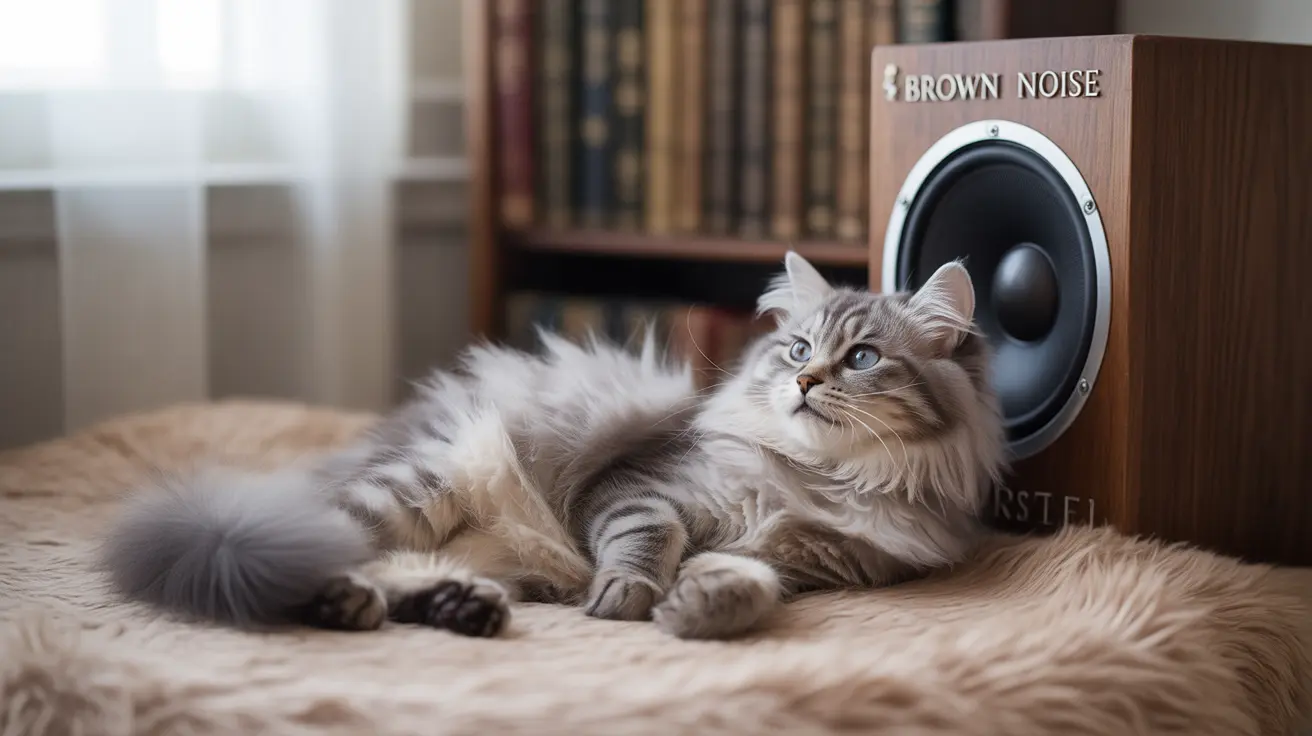If you're looking for ways to help your cat relax, you might have heard about brown noise. This unique sound frequency has gained popularity for its potential calming effects on both humans and pets. But do cats actually like brown noise? Let's explore the science behind this trending sound therapy and its effects on our feline friends.
Understanding how cats respond to different sounds is crucial for creating a stress-free environment. With their incredibly sensitive hearing, cats can be particularly affected by various noise frequencies, making the choice of ambient sound especially important for their wellbeing.
What Is Brown Noise and How Does It Affect Cats?
Brown noise is characterized by deeper, lower frequencies compared to other colored noises, similar to the sound of ocean waves or a low roar. Unlike white noise, which contains equal energy across all frequencies, brown noise emphasizes lower frequencies that many cats find more soothing.
The lower pitch of brown noise can help mask sudden, startling sounds that might otherwise stress your cat. This creates a more stable auditory environment, potentially helping your cat feel more secure and relaxed.
Understanding Your Cat's Sound Sensitivity
Cats have extraordinarily sensitive hearing, capable of detecting frequencies between 48 Hz and 85 kHz - far beyond human hearing capabilities. This heightened sensitivity means they're particularly responsive to environmental sounds, both positively and negatively.
Due to this acute hearing, cats often show strong reactions to different types of noise. While some cats might find brown noise calming, others might prefer complete silence or different sound frequencies.
Benefits of Brown Noise for Cats
Many cat owners report several positive effects when using brown noise:
- Reduced anxiety during thunderstorms or fireworks
- Improved sleep patterns
- Decreased stress in new environments
- Better focus during playtime
- Calmer behavior overall
How to Introduce Brown Noise to Your Cat
The key to success is gradual introduction and careful observation of your cat's response:
- Start with very low volume
- Play the sound for short periods
- Watch for signs of comfort or distress
- Gradually increase duration if your cat responds positively
- Maintain consistency in volume and timing
Signs Your Cat Enjoys Brown Noise
Look for these positive indicators:
- Relaxed body posture
- Slow blinking
- Normal grooming behavior
- Comfortable sleeping
- Purring
- Regular eating habits
When to Avoid Using Brown Noise
Some situations where brown noise might not be appropriate:
- If your cat shows signs of distress
- When your cat is ill or recovering from surgery
- If there are multiple cats with different sound preferences
- During important auditory learning experiences
Frequently Asked Questions
How does brown noise help reduce anxiety in cats during stressful events?
Brown noise creates a consistent, low-frequency sound barrier that helps mask sudden, startling noises. This acoustic masking effect can help reduce your cat's stress response to environmental triggers like thunderstorms or construction noise.
What is the difference between brown noise and other colored noises like white and pink noise for cats?
Brown noise has deeper, lower frequencies compared to white and pink noise. White noise contains all frequencies equally, while pink noise decreases in intensity at higher frequencies. Brown noise's deeper sound profile often proves more soothing for cats due to its similarity to natural, calming sounds.
Can playing brown noise improve my cat's sleep and relaxation at home?
Yes, brown noise can potentially improve your cat's sleep and relaxation by creating a consistent sound environment that blocks out disruptive noises. Many cat owners report their pets sleep more soundly with brown noise playing in the background.
How should I introduce brown noise to my cat to ensure it has a calming effect and not cause stress?
Start with very low volume for short periods, gradually increasing duration based on your cat's response. Monitor their behavior for signs of comfort or distress, and adjust accordingly. Always provide a quiet space where they can retreat if needed.
Are there any situations when brown noise might not be suitable for cats, and should I consult a vet before use?
Brown noise might not be suitable for cats with hearing sensitivities or certain medical conditions. Consult your veterinarian before using brown noise if your cat has anxiety issues, hearing problems, or other health concerns that might be affected by sound therapy.
Conclusion
While brown noise shows promise as a calming tool for cats, success depends largely on individual preferences and proper implementation. Pay attention to your cat's reactions and adjust accordingly. When used appropriately, brown noise can be an effective addition to your cat's stress-management routine.






